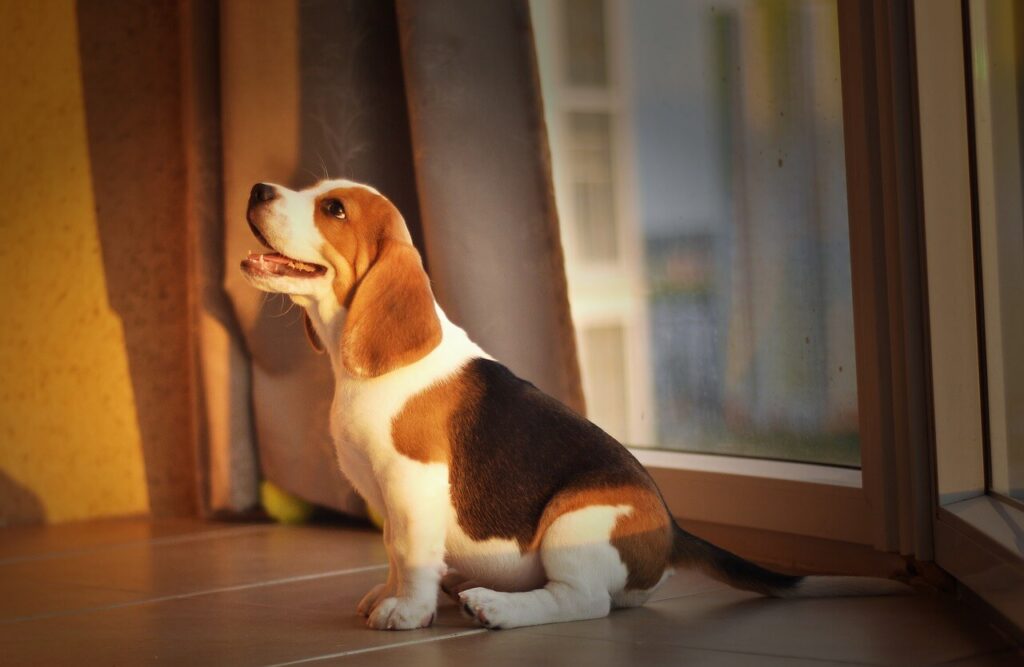Puppy-Proofing your Home

Puppies are incredible little balls of energy, and they can quickly find themselves in a lot of trouble! Much like human infants that begin to be mobile, puppies will explore anywhere they can fit into, under, or over, so you should always puppy-proof your home in advance to avoid any problems.
Here are ten things you should do to puppy-proof your home:
- Cover up all electrical cords. Never, ever leave any type of electrical cord dangling, hanging, or balled up all over the floor. Some cords, like on a lamp, are harder to fully conceal, but you definitely don’t want the computer cords, television cords, etc. fully exposed. Bundle multiple cords in cord keepers.
- Look for all items that are at puppy level on tops of tables, lying on floors, etc. and put them away. Puppies explore the world with their mouths, and these items left out are easy targets. He doesn’t know he shouldn’t take them. Shoes should go inside closets; children’s toys should be put away in drawers; books, knickknacks, and other items should be located higher than your puppy can reach.
- All cleaning supplies, medications, and poisonous items should be put away in safe locations. Keep medications off of counter tops and instead tucked safely away in cabinets. Try to avoid using mouse and rat poisons all together. Dogs can die from both the poison and from ingesting poisoned mice. Cleaning supplies should be kept in the garage, inside closets, or on shelves out of the dog’s reach. These are all hazardous items.
- Keep candy and other inedible items out of his reach. Research what foods (like chocolate) and plants (like ivy) are poisonous to dogs and make sure to put these away or no longer keep them in the house.
- Place baby-gates at locations like stairs. It will be important to teach your puppy how to navigate stairs, but until he is older and/or a little larger, use caution with stairs. If your puppy should fall down or off a staircase, he could suffer internal damage like bleeding, head trauma, or die.
- Make sure to put away all loose papers, clothes, and towels. Items made of fabric or paper is easy for a puppy to chew on and eat, but they also can quickly cause a blockage in his stomach or intestines. A blockage that cannot pass on its own becomes an emergency surgery situation.
- Look around your yard for open areas or insecure areas in your fencing. Repair those places that could be dangerous or escape routes before your puppy comes home. Also look for any holes in the yard that the puppy could twist his leg in while playing.
- Puppies can drown just like babies, so set up barriers to pools to limit his access to them, and drain or cover any other kind of open water. Small water gardens can also pose an extra risk for a puppy trying to get in to catch fish, but with the extra electrical issues in a water garden, not only can he drown, he could be electrocuted.
- Safeguard any other pets within the home. If you have small handheld pets like
hamsters, rabbits, ferrets, or birds, locate their cages in a quiet and safe location that will be out of puppy’s reach. For the larger breeds of dogs, these animals could be considered prey and he might eat them if not properly located. - Don’t ever leave a training collar on your puppy, especially a choke chain. While you should train with other equipment anyways, a choke chain can easily strangle a dog if caught on anything. Also, remove collars when your dog is in the crate, and use caution with multiple dogs and leaving collars on. They can become tangled in them during play. Always micro-chip your dogs in case they are lost when the collar is off.
Every home always provides its own safety hazards, so the best thing to do is to walk around your home and think like a puppy. Look everywhere! Under beds, cabinets, high and low and look for all items that might be chewed on, played with, ingested, etc. Always operate under it’s better to be safe than sorry motto. Keep doors closed to rooms with too many temptations, like a child’s room.
Your puppy will give you plenty of challenges and probably will find a few items you missed, but just keep a close eye on him the first few weeks and quickly correct anything you overlooked.
